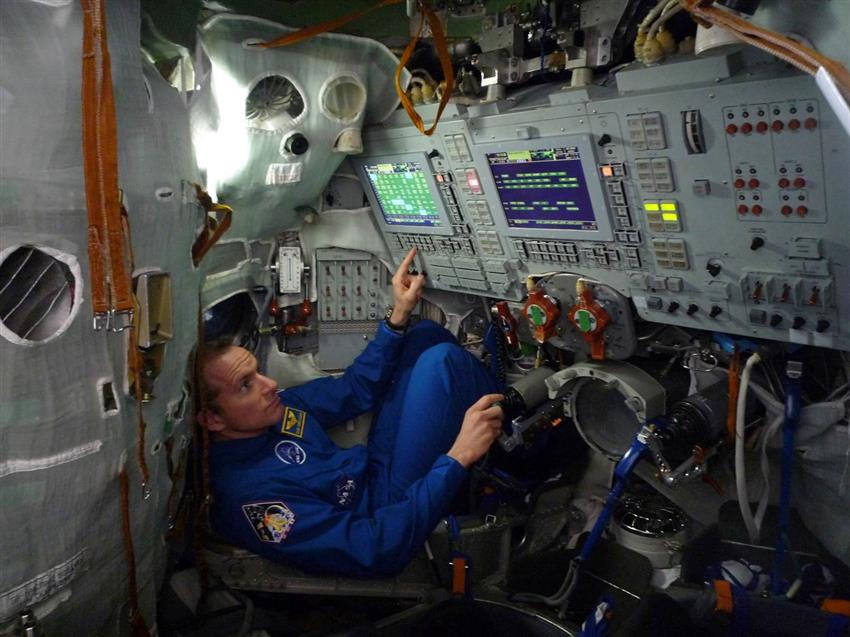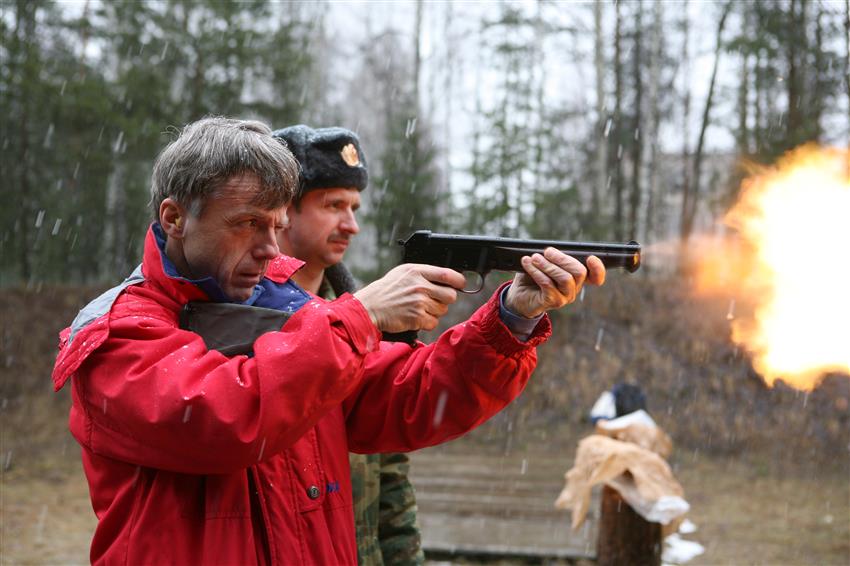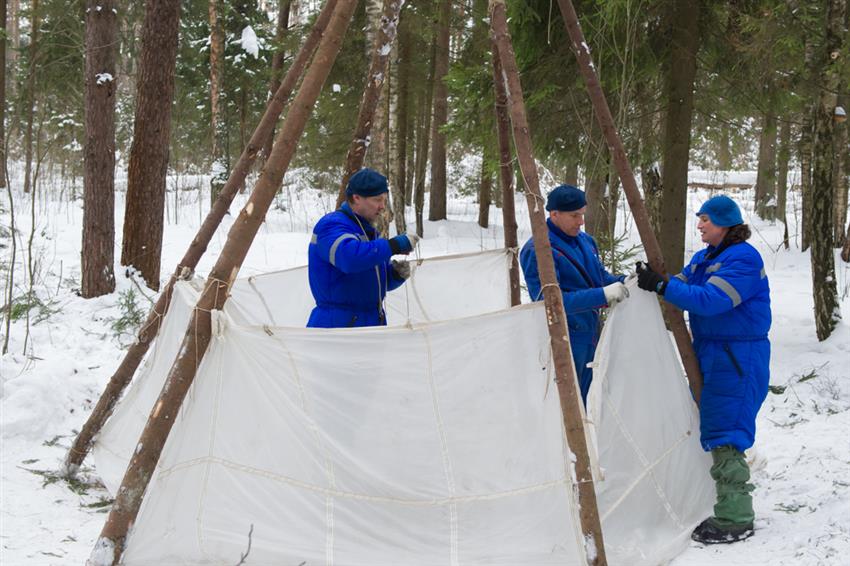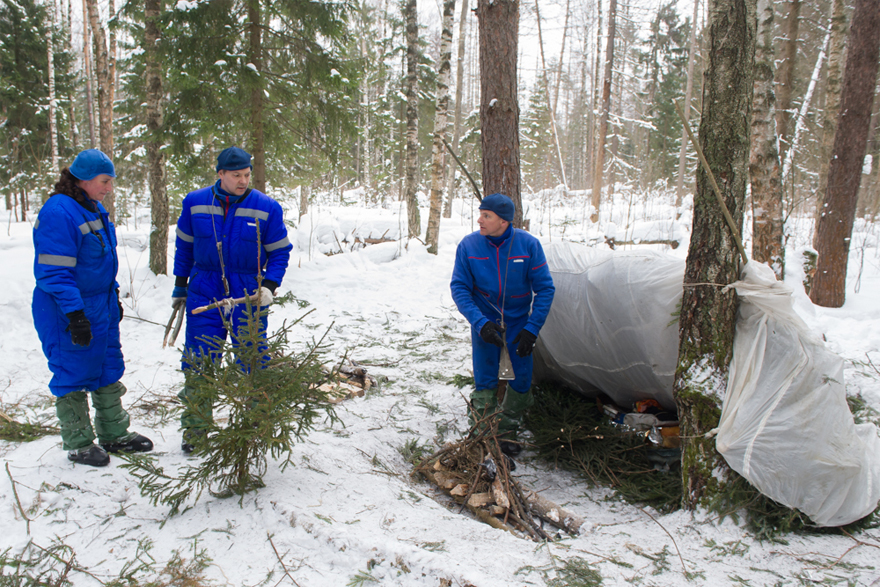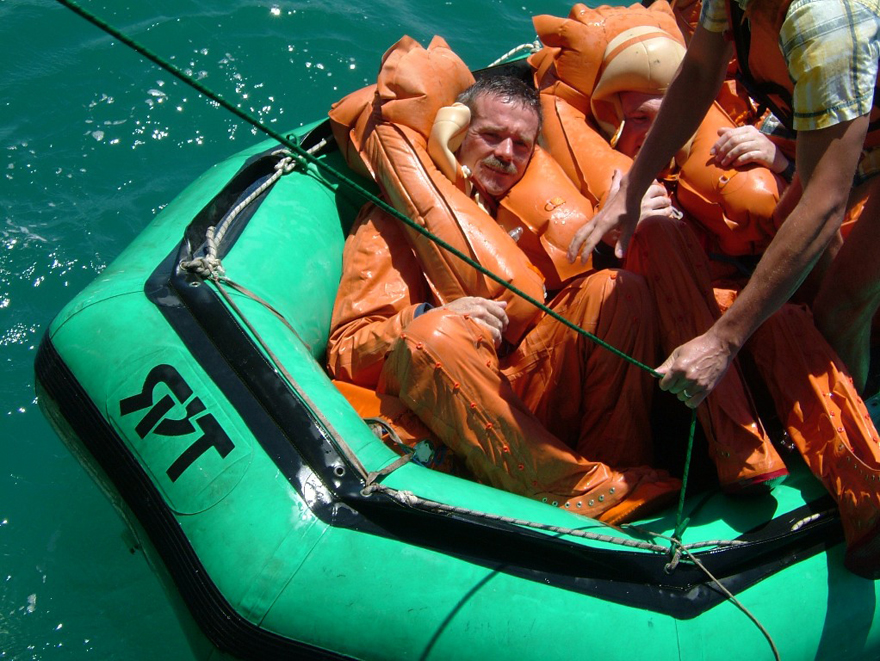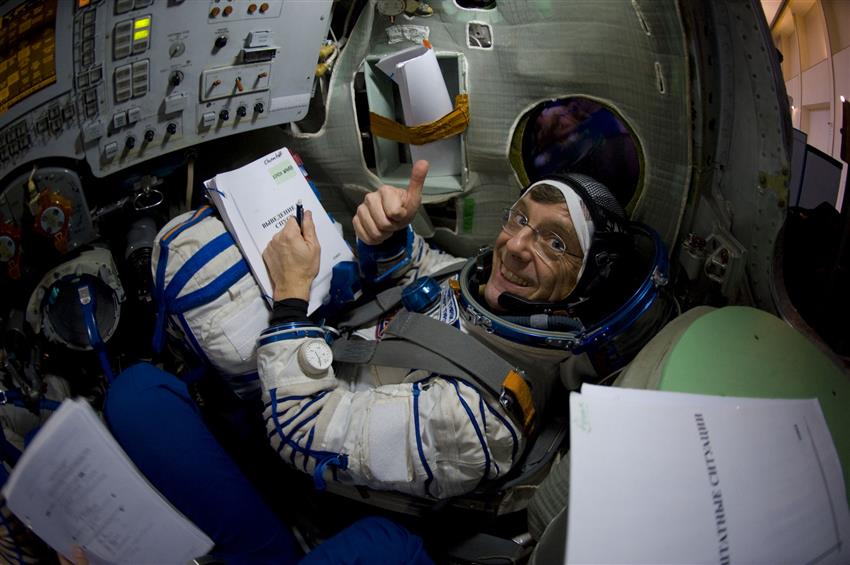Flight training and simulations
To be eligible for a seat on the Soyuz vehicle, astronauts must undergo extremely rigorous training. Training takes place mainly in Star City, Russia, and includes basic training, flight simulations, centrifuge exercises and survival training for hostile environments.
Before they are allowed to depart astronauts and cosmonauts must pass a series of exams, including comprehensive qualification exams.

David Saint-Jacques is wearing the Sokol pressure suit in the Soyuz spacecraft simulator. (Credit: Canadian Space Agency)
Basic training
To earn a spot on the Soyuz, an astronaut must:
- master the technical aspects of the vehicle
- speak Russian
Basic training familiarizes astronauts with the Soyuz's many systems and the Russian components of the International Space Station (ISS). Systems include:
- propulsion
- electrical power
- thermal control
- communication
Flight simulations
In order to travel into space, astronauts must first be able to perform the required tasks of their position on the Soyuz. This means an astronaut may spend hundreds of hours in the Soyuz simulator preparing for different situations, such as:
- rendezvous and docking (when the Soyuz meets the ISS)
- contingency manoeuvres during re-entry into Earth's atmosphere
- manual flying
- contingency measures (fire, depressurization and air contamination from ammonia leak)
These simulations help astronauts:
- put their knowledge into practice
- perfect their operational skills
- develop their ability to coordinate a team
Centrifuge exercises
The Yuri Gagarin Cosmonaut Training Center in Star City, Russia, has two centrifuges. These massive arms, at 7 and 18 metres long, can turn quickly to produce very strong accelerations.
The faster the arm turns, the more astronauts feel like they are getting heavier, sort of like being on a roller-coaster!
During the descent of the Soyuz capsule, acceleration may affect how the pilot handles the controls, causing the pilot to make mistakes. The centrifuge therefore plays an important role in re-entry training.

As part of his training, David Saint-Jacques performs simulation exercises in Star City's CF-7 centrifuge. (Credit: Canadian Space Agency)
Survival training for hostile environments
At the end of a mission, the Soyuz capsule re-enters the atmosphere before landing on the steppes of Kazakhstan.
However, there is a chance that, due to unforeseen events such as bad weather or a technical failure, the Soyuz and its crew may be forced to land in a remote or hostile part of the world.
In such a case, it could be hours or even days before a search and rescue team arrives at the landing site!
Survival training is therefore crucial for Soyuz astronauts. They must learn to:
- set up camp and build various kinds of shelters
- find kindling and food
- fire a gun in the event that they need to hunt for food
- set off flares to guide the search and rescue team to their position
One of many scenarios: splashdown
The Soyuz capsule may even drift off its trajectory and land on water rather than on ground! In that situation, astronauts can don a Forel floating suit after putting on several layers of thermal underwear.
Exams
For astronauts to be certified for a mission on the ISS, they must pass a series of exams, including qualification exams.
This is a formal and rigorous process. When the astronauts perform their tasks in the simulator during the exam, every command and every word is analyzed, and the smallest movements are scrutinized to evaluate their:
- judgment
- reaction times
Exam Commission
Each Exam Commission consists of many examiners:
- about 30 training department heads
- system experts from Energia (the prime contractor for the Soyuz program and Russian modules of the ISS)
- officials from the Cosmonaut Office
Day of testing
The crew reports to the Exam Commission prior to entering the simulator.

Canadian astronaut Chris Hadfield writes his signature in front of senior officials at the Gagarin Cosmonaut Training Center as part of the formalities preceding the qualification exam. (Credit: NASA)
There is a scripted dialogue exchanged between the crew commander and the head of the Exam Commission. Crewmembers take an envelope containing the exam, sign and date it, and hand it to the supervisor.
A card inside the envelope (hidden from crewmembers) outlines the scenario which, of course, includes a number of unforeseen events!
Robert Thirsk's qualification exam
Robert Thirsk's simulated scenario in included:
- failure of the radio transmitter
- failure of the rendezvous radar during approach to the ISS
- failure of the translational hand controller during final approach to the ISS
- shutdown of the main Soyuz engine
- depressurization of the Soyuz Descent Module
- a major bug in the emergency descent program
But that's not all: the simulation ended with a fire! Robert Thirsk and his colleagues had to:
- don gas masks
- extinguish the simulated fire
- close the hatches to protect the rest of the ISS from smoke
Explore further
- What is the Soyuz spacecraft?
- Journey of the Soyuz, from lift-off to landing
- Mission-specific training
- Date modified:
